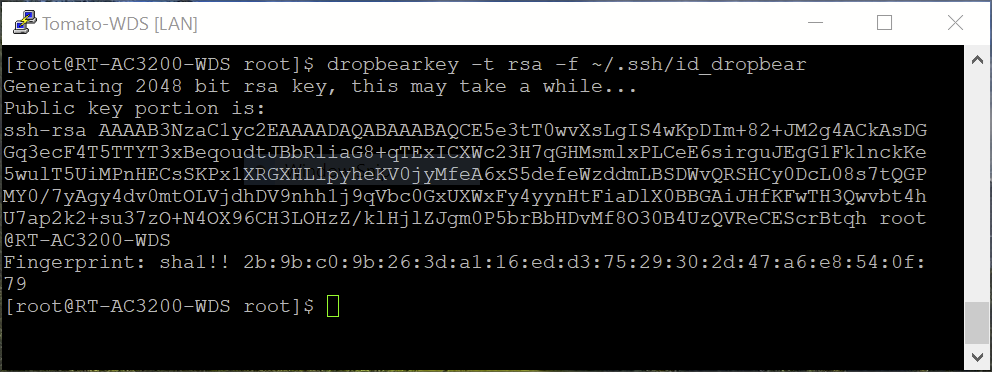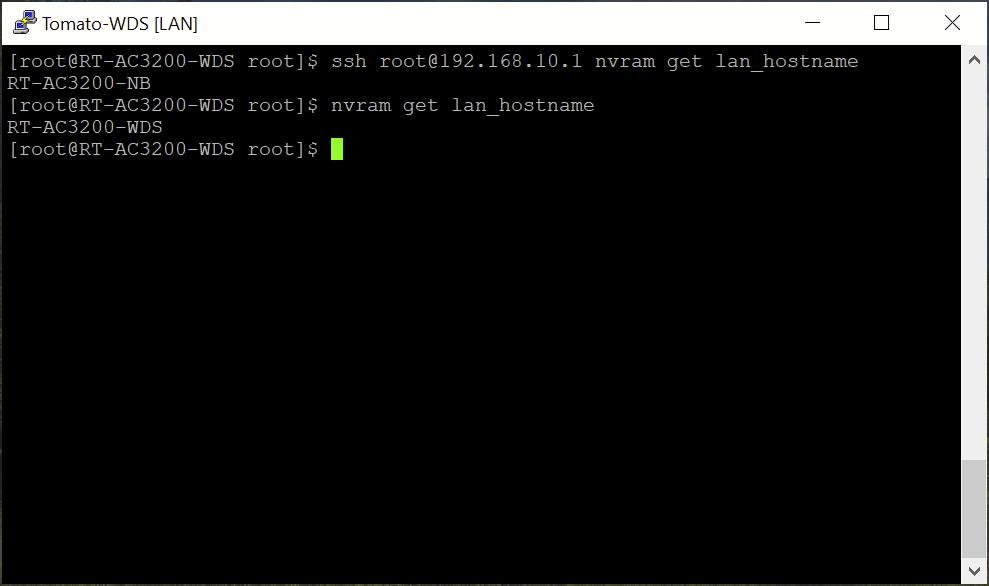User Tools
Sidebar
This is an old revision of the document!
Table of Contents
Enable “Password-less” Router-to-Router SSH Encryption
Overview
FreshTomato includes Dropbear, an SSH client/server program. Dropbear can generate a KeyPair that offers password-less connections. A command is run on the primary router which generates a public key. That Public Key must then be pasted into the secondary router’s Authorized Keys field, in the SSH Daemon section of the Administration/Admin Access menu.
This allows command-line management of the secondary router (or SSH Host) from a primary router, (the SSH Client). This can be useful when the system clock is not maintained in the secondary router and time-sensitive jobs must be scheduled. For example, as seen below, it may be useful to switch wireless radio[s] on or off to a schedule (not shown). It could also be used to run scripts on the target for any supported command.
How To
01 - On the primary router [the one issuing SSH commands] run the dropbearkey -t rsa -f ~/.ssh/id_dropbear command to generate the “Key Pair”. This will display a result similar to that shown below. [Leave this window open; you will need it for step 2.]
02 - Copy+Paste the “Public Key portion” to the secondary router’s “Authorized Keys” field, as below:
[Note that a pre-existing, and unrelated, key is redacted above.]
03 - Connect to the secondary router from within an SSH session [running on the primary router]. The example below uses the nvram command to display the host name. The first command string [ssh root@192.168.10.1 nvram get lan_hostname] executes the command on the secondary router and then it is executed locally [nvram get lan_hostname].
Example
Enable/Disable the eth1 5Ghz radio on the secondary router. [Note that a temperature is shown only when the radio is *On.]
01 - Status before [Primary router].
02 - Command [ssh root@192.168.10.1 radio toggle 1] executed.
03 - Status after.
[If the same command is repeated, eth1 will be switched *Off on the primary router.]
Notes
SSH must be enabled on both routers.
The key generated is not preserved across a reboot of the [primary] router. Either keep a copy of the id_dropbear file offline [on a UFD or “CIFS Client” share] for restoration, or be prepared to repeat the procedure [steps 1 & 2 under “How To”] after a reboot [removing any redundant key from the secondary router during the process].
This guide was produced using PuTTY [v0.76] and FreshTomato v2021.5.
Insiration was provided by this article [and this process was first documented here].






